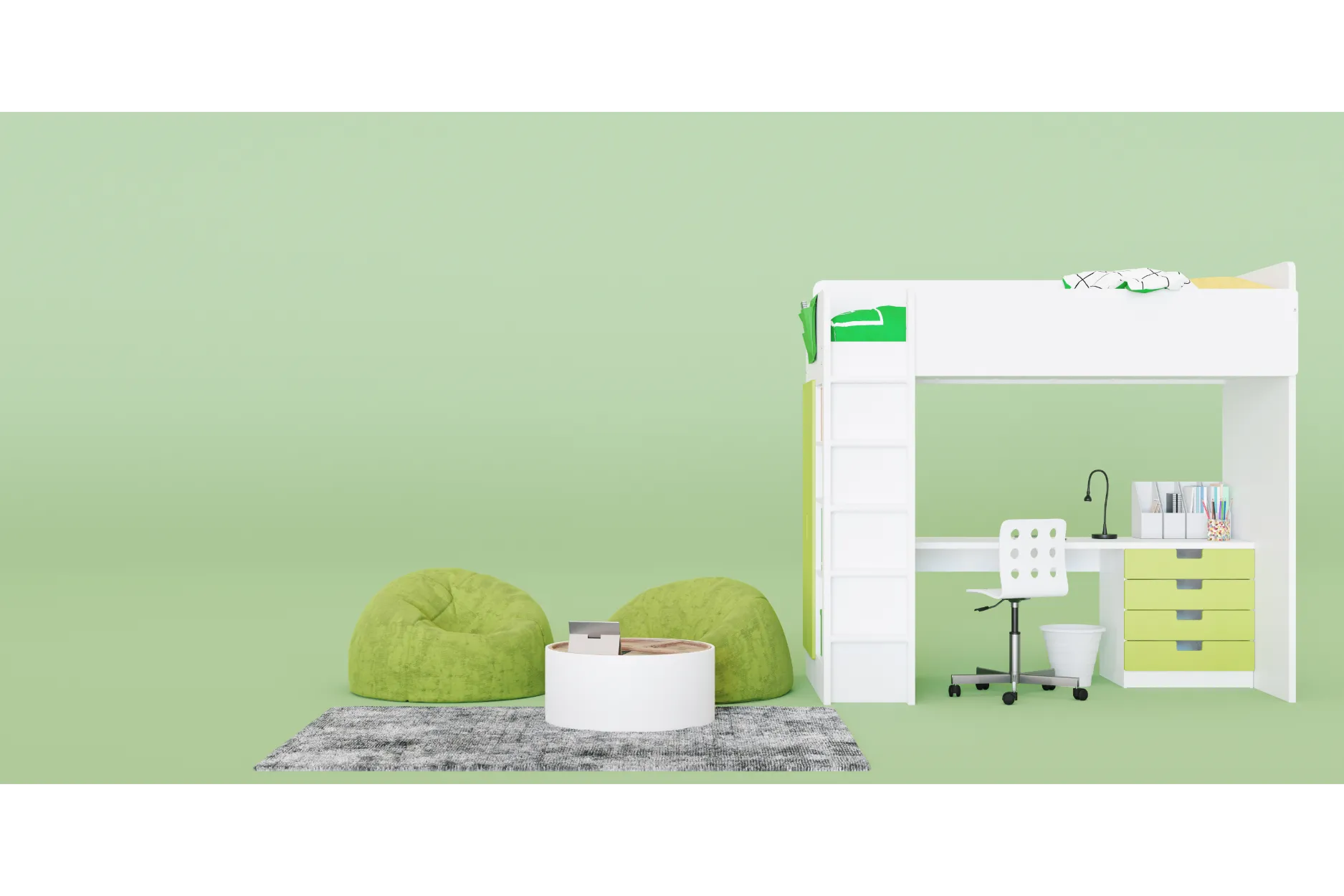
In today's fast-paced world, technology has revolutionized the way we shop, especially when it comes to interior design. The concept of "anywhere, anytime shopping" has become a reality with the advent of 3D virtual stores. These virtual shopping experiences offer numerous advantages, both for consumers and interior design businesses.
In this blog, we'll explore the transformative power of digital technology in interior design, focusing on 3D visualization and product visualization, while showcasing how these innovations are reshaping the industry.
The interior design industry has traditionally relied on physical showrooms and stores for clients to explore products and designs. However, the rise of digital technology has disrupted this conventional approach. Now, interior design businesses are embracing digital transformation to offer their clients a more accessible and convenient shopping experience.
One of the most significant aspects of this transformation is the integration of 3D virtual stores. These virtual spaces enable customers to explore an extensive range of interior design products and concepts from the comfort of their own homes. Gone are the days of traveling to multiple stores or waiting for appointments with designers. With 3D virtual stores, you can browse and shop for your favorite products anywhere and anytime.
One of the primary advantages of 3D virtual stores is the unparalleled product visualization they offer. Unlike traditional 2D images, 3D models provide a realistic and immersive experience. Customers can view products from every angle, zoom in to examine details, and even see how they fit into different room settings. This level of detail helps buyers make informed decisions, reducing the risk of disappointment upon receiving their purchases.
The convenience of shopping in 3D virtual stores cannot be overstated. Whether you're a busy professional with limited free time or someone who prefers shopping from the comfort of your home, virtual stores cater to your needs. With a few clicks, you can access a vast catalog of products, compare prices and styles, and make purchases at your own pace. This accessibility is a game-changer for interior design enthusiasts and professionals alike.
For interior design businesses, setting up and maintaining physical showrooms can be costly. Rent, utilities, and staffing expenses can quickly add up. In contrast, 3D virtual stores significantly reduce these overhead costs. This cost-efficiency allows businesses to offer competitive pricing and invest in expanding their product range and services.
The 3D experience in virtual stores goes beyond merely showcasing products. Many platforms offer tools that allow customers to personalize and customize products according to their preferences. This level of personalization enables clients to create unique designs that reflect their individual style, making their homes truly one-of-a-kind.
To better understand the impact of 3D virtual stores, it's essential to explore the technological advancements that have made this transformation possible.
Modern 3D rendering technology has evolved to provide incredibly detailed and lifelike visuals. This level of realism is crucial for product visualization in interior design, as it allows customers to see precisely how a piece of furniture or decor item will look in their space.
Some virtual stores take the 3D experience a step further by integrating augmented reality. With AR, customers can use their smartphones or tablets to superimpose virtual products into their actual living spaces. This "try before you buy" approach enhances confidence in purchasing decisions.
Artificial intelligence plays a significant role in 3D virtual stores, offering personalized product recommendations based on a customer's style preferences and previous purchases. This not only simplifies the shopping process but also encourages customers to discover new products that align with their tastes.
The adoption of 3D virtual stores is not only reshaping the customer experience but also transforming how interior design businesses operate.
With a virtual storefront, an interior design business can reach a global audience. There are no geographical limitations, allowing companies to expand their client base and cater to a diverse range of tastes and preferences.
Interior designers can use 3D virtual stores as a valuable tool in their design process. They can quickly source and visualize products, experiment with different layouts, and present comprehensive design concepts to clients, all within a digital environment.
Reducing the need for physical showrooms has significant sustainability benefits. Interior design businesses can contribute to environmental conservation by minimizing their carbon footprint. This environmentally conscious approach can also resonate with eco-conscious customers.
Several interior design businesses have embraced 3D virtual stores and are leading the way in this digital transformation:
Read Also: Beyond Brochures: How Cutting-edge Immersive 3D Experiences Elevate Brand Interactions
The era of 3D virtual stores has ushered in a new age of convenience and accessibility in interior design shopping. With advanced 3D visualization, product customization, and augmented reality integration, these virtual spaces offer an immersive and personalized shopping experience. Moreover, they have transformed how interior design businesses operate, making it more cost-effective, sustainable, and globally accessible.
As you embark on your next interior design project or shopping adventure, consider the advantages of 3D virtual stores. Embrace the digital transformation and take inspiration from industry leaders who have already embraced this exciting evolution in the world of interior design. With 3D virtual stores, you can shop anywhere and anytime, bringing your dream home design to life with just a few clicks.
The future of interior design is virtual, and it's a future that's more accessible and exciting than ever before.
FAQs
Yes, many 3D virtual stores offer augmented reality (AR) integration. This allows you to superimpose virtual products into your real living space, providing a "try before you buy" experience to boost confidence in your purchasing decisions.
3D visualization enhances interior design businesses by reducing overhead costs, expanding their reach to a global audience, streamlining the design process, and offering sustainable alternatives to traditional showrooms.
A 3D virtual store is an online shopping platform that uses 3D visualization technology to create immersive, lifelike shopping experiences. It allows customers to explore products, customize designs, and make purchases from the comfort of their own homes.